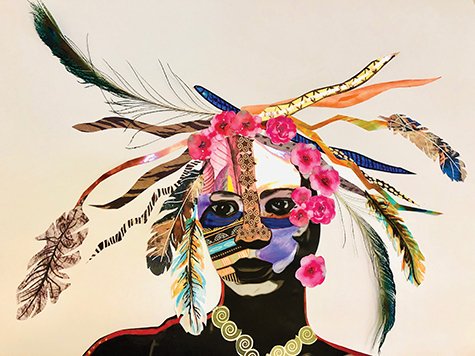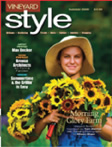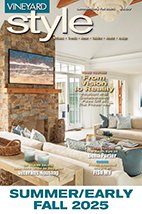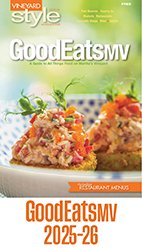ARTIST PROFILE

Borders to Bridges
Arts-Based Curriculum for Social Justice
By Tessa Permar
What sparks a social movement? For Lynn Ditchfield, author of Borders to Bridges, social justice work, creative collaboration, and education have been her life’s work. What she, Camila Fernández, and Janice Frame have created in Borders to Bridges is more than a curri culum, it is both a reinvigoration and a continuation of creative social justice work. It is both a book and a part of a movement that sparks infinite opportunities for growth, creativity, learning, and change.
Borders to Bridges: Arts-based Curriculum for Social Justice-Belonging, Equity, Diversity, Inclusion, Sovereignty, Reciprocity is a curriculum: a collection of lessons for teachers and students. Contributors include world-renowned educators, poets, artists, and writers from 38 countries and 20 states of the U.S. The lessons are organized by theme into seven chapters, each containing lessons for K-5th grade and for 6th grade and up. For example, Chapter 4: Identity, Culture, Personal Narrative offers a multi-day activity from educator Karen Murphy that guides K-5th grade students through a process of describing and mapping their local spaces including home, school, and town. In another activity from Chapter 4 for 6th graders and older, educator Rachel B. Reinhard has contributed a lesson on oral history in which students learn how to interview individuals for the purpose of learning and preserving their stories. Other chapter themes include writing and literature, visual imagery, investigation and inquiry, community, global connections, mindfulness and more. The structure will be familiar to many teachers, but one glance inside and readers will know that this book is far more than just a curriculum.
Cover to cover, Borders to Bridges embodies what it teaches: that art, creativity, connection, communication, justice, equity, diversity, belonging, and inclusion are all part of the same interconnected movement. The book is a community project, displaying photos of pilot projects in Vineyard schools alongside their corresponding lessons. The book is a vibrant anthology of art and literature, presenting photographs, collages, paintings, poetry, prose, and more from over ninety contributors. The book is also a statement in itself, opening its first page with a land acknowledgment to the Wampanoag people and the land of Noépe, also known as Martha’s Vineyard, on which this book was born.
Every activity is presented with excerpts from writers, scholars, and educators about the topic addressed in the activity. For example, local Spanish language teacher Vanessa Vento shares an investigative exercise that uses film, news, and media to help students more deeply understand the challenges faced by Latin American newcomers to the US. This exercise is paired with a quote from Dean and Educator Pedro Noguera about the impact of gaps in access to education. In addition to these relevant and often poignant quotes, every lesson is presented with specifics like materials list, time and space requirements, related lessons, themes addressed, as well as an abundance of related resources in the form of links, videos, books, and articles.
In presenting this abundance of information, Lynn Ditchfield and Janice Frame drew from their backgrounds in creative education to create what feels like a choir of individuals all working toward a common goal: justice and equity through creativity and understanding. It is both a shared culmination and continuation of their full careers as artists, educators, and life-long learners. Lynn shares, “Borders to Bridges really began in 1970 when I taught in an underfunded high school in Washington, DC and did feminist theater workshops with Earth Onion Women’s Improvisational Theater. Some of the lesson plans and warm-up exercises in the book came from those foundational teaching experiences – many learned, borrowed, and recreated from others.” Lynn has spent the past 42 years on Martha’s Vineyard, teaching children’s theater for nearly a decade, teaching Spanish at Martha’s Vineyard Regional High School (MVRHS) for 24 years, and, for 7 years, re-establishing adult education through Adult and Community Education MV. For nearly 2 decades, Lynn taught workshops and graduate courses on-Island as well as with students in Argentina, Spain, Puerto Rico, and Costa Rica. Lynn first met Janice while working as co-advisers to the Multicultural Club, in the 1990s.
Janice Frame grew up in a family that deeply valued the arts and education. After teaching in Westfield, MA and Atlanta, GA, Janice moved to the Vineyard and became the West Tisbury School’s art teacher for grades K-8. Eventually Janice brought her beloved lessons on painting, drawing, multimedia, perspective, color, and collage as well as larger areas like work ethic, kindness, art history, and film to the students at MVRHS. Lynn expresses, “We both demanded the highest standards from all our students while appreciating their views and participation and nurturing their developing voices, and exploration into art and culture.”
One such student was Camila Fernández, a multilingual graduate of MVRHS dedicated to immigrant rights. Lynn shares, “From 2017-2020, Camila was essential in creating the initial Borders to Bridges website, FIESTA: Focus on Immigration Education and Stories Through The Arts, and supporting some of the outreach, research, and consultation. Camila is currently studying Law at Rutgers University to become an immigration attorney.
For Janice and Lynn, retiring from the high school prompted new opportunities for their own practices. Janice, who has long been an integral member of the arts and theater community on the Vineyard, expanded her own art repertoire in a series of multimedia portraits from African and Afro-diasporic cultures, shown by the Eisenhauer Gallery in Edgartown. Lynn enrolled at the European Graduate School of Arts, Health and Society Division to pursue her PhD, focusing on teaching for social justice. The literature review of her dissertation highlighting the work of dozens of inspiring theoreticians and practitioners will soon be made into a guidebook called Visionary Voices for Social Justice Education to accompany Borders to Bridges. Lynn explains, “In 2019, Janice and I co-coordinated the pilot project on MV…With the help of six in-school facilitators, and a list of 135 interested teachers, we began piloting lessons (outlined in the book on pg. 280). I was also able to share materials with colleagues to extend the pilot beyond MV to other US states and Argentina, Canada, Turkey, Peru.”
Janice and Lynn tapped into their network of artists and educators both locally and globally. “Our collaboration on Borders to Bridges is just an organic continuation of sharing thoughts, ideas, aesthetics, philosophies, and meaning making,” says Lynn. “When it came time to put the book together, I reached out to colleagues whose work I admired.” Readers may recognize contributions from Island artists such as Washington Ledesma, Althea Freeman-Miller, Leo Frame, and Barney Zeitz, and educators like Elliott Bennett, Molly Cabral, Marge Harris, and Donna Swift. Lynn expresses, “the current forces of division, book banning, and censorship made writing this curriculum urgent. At the same time, a fusion of energy erupted in the fight for multiracial democracy amidst a crippling pandemic that exposed stark inequities. These challenges provide opportunities for educators to engage in dialogue about the critical issues that touch our daily lives and communities.”
Beyond the colorful hard copy book, Borders to Bridges is also an online platform. The website borderstobridges.org, developed by local web designer Matthew Fisher, offers myriad free resources geared toward antiracism, teachers and educators, service, arts and media, news, and more. (A profile of Matthew and his company appears on page 18 of this issue). The site also features a six-minute “how to” video, and a colorful gallery of the visual artwork displayed in the book, along with artist biographies.
In order to continue spreading the lessons and impact of the book and website, Lynn and Janice host training sessions for educators and community members to engage with the material and learn to teach it themselves. They hosted one such training in June. Along with contributing educator and therapist Ellen Yang, Ditchfield and Frame guided a group of eager participants through several Borders to Bridges exercises. Participants generated verbal and visual artwork, engaged in group dialogue, and left with a sense of connection and conviction. Later in the summer, Lynn and Janice presented Borders to Bridges at a book launch at the West Tisbury Library. The book is now available for purchase at Olive Branch Fair Trade, Bunch of Grapes, Edgartown Books, Cronigs Market, and Amazon.
While the book provides a series of activities for professional educators, Borders to Bridges is not only a comprehensive curriculum. As the website explains, “The Guidebook contains practical lessons plans, narratives, poetry, mixed media artwork and resources for K-12 educators, and after-school, refugee, counseling, prison, adult, university, teacher training education programs.” Additionally, the book has much to offer caring community members, art-appreciators, activists, world travelers, avid-readers, as well as students and life-long learners.
Information about purchasing digital and print copies (hardcover and softcover) is available online at borderstobridges.org. For bulk copies of books (10 or more), contact: ldborderstobridges@gmail.com.








